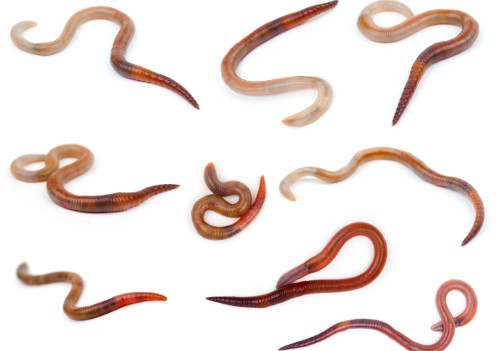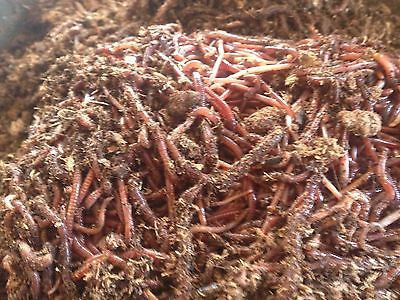Red Wiggler Worms - All-natural Remedy for Eco-friendly Composting
Red Wiggler Worms - All-natural Remedy for Eco-friendly Composting
Blog Article
Taking Full Advantage Of the Benefits of Red Wiggler Worms: A Comprehensive Handbook for Home Gardeners and Urban Farmers
In the realm of lasting gardening techniques, red wiggler worms stand as unrecognized heroes, silently transforming natural waste into nutrient-rich spreadings that can work marvels for soil wellness. As home gardeners and city farmers significantly seek eco-friendly and cost-efficient means to improve their gardens, the prospective benefits of harnessing the power of red wigglers can not be overstated. From lessening cooking area waste to growing healthier plants, the utilization of these modest animals offers a wide variety of advantages. By exploring the intricacies of just how to effectively look after and maximize the advantages of red wiggler worms, individuals can open a wide range of chances for enhancing the sustainability and productivity of their horticulture ventures.
Recognizing Red Wiggler Worms
Red Wiggler worms, renowned for their efficient composting capacities, are a species of earthworms extensively utilized in vermiculture practices. These worms, medically known as Eisenia fetida, flourish in rotting natural product, making them ideal candidates for composting.
One key quality of Red Wiggler worms is their reproductive rate. These hermaphroditic creatures possess both female and male reproductive organs, allowing them to reproduce rapidly under favorable conditions. A mature Red Wiggler can create numerous offspring in a brief duration, making certain a constant populace within a composting system.

Establishing a Worm Container
When developing a worm container for vermiculture purposes, appropriate preparation and interest to information are essential for creating a favorable atmosphere for Red Wiggler worms. Begin by choosing an ideal container for your worm container.

Area the worm bin in an awesome, dark area away from direct sunshine and extreme temperatures. By adhering to these steps, you can establish up a flourishing worm container that will efficiently process natural waste into nutrient-rich vermicompost for your garden.
Feeding and Preserving Worms
Guaranteeing a well balanced and nourishing diet plan is vital for the wellness and productivity of Red Wiggler worms in a vermiculture system. It is essential to prevent feeding them citrus fruits, onions, garlic, dairy products, meat, and oily foods as these can be dangerous to the worms or create undesirable smells in the container.
Correct dampness degrees are additionally critical for the well-being of Red Wiggler worms. The bedding should feel like a damp sponge, offering enough wetness for the worms to breathe through their skin. Regularly check the dampness degrees and readjust by including water or completely dry bed linens product as required. Furthermore, preserving appropriate temperature conditions in between 55-77 ° F(13-25 ° C )will certainly make sure ideal worm activity and reproduction. By diligently checking their diet regimen, wetness, and environmental conditions, home garden enthusiasts and city farmers can maintain a productive and Visit This Link healthy Red Wiggler worm populace for composting objectives.
Collecting Worm Castings
To efficiently draw out nutrient-rich worm castings from the vermicompost, a methodical harvesting procedure find more info is important for maximizing the composting benefits. The initial step in gathering worm spreadings is to urge the worms to migrate to one side of the container.
After the spreadings have been gathered, it is necessary to separate any staying worms from the spreadings to avoid harming them during storage space or application. One reliable method is to produce conical heaps of spreadings under bright light. Worms will instinctively move far from the light, enabling very easy separation and removal.
Finally, the gathered worm spreadings need to be stored in an amazing, dark, and completely dry area to keep their quality and effectiveness as a nutrient-rich soil amendment. By complying with these actions, home garden enthusiasts and city farmers can take full advantage of the benefits of red wiggler worms in their vermicomposting systems.
Using Worm Castings in Gardening
The consolidation of nutrient-rich worm spreadings right into yard soil can considerably improve plant growth and general soil health and wellness. Worm castings, likewise called vermicast, are an all-natural plant food generated by red wiggler worms as they damage down natural matter. These castings are rich in necessary nutrients like nitrogen, phosphorus, potassium, and beneficial microbes that promote plant growth and improve dirt structure.
When making use of worm spreadings in horticulture, it is important to blend them extensively right into the dirt or utilize them as a top clothing around plants. The slow-release nature of worm spreadings ensures a stable supply of nutrients to plants in time, lowering the threat of nutrient leaching and advertising lasting soil fertility. Additionally, worm castings aid boost soil aeration, water retention, and microbial activity, developing a healthy and balanced atmosphere for plant roots to grow.

Conclusion
In verdict, the utilization of red wiggler worms additional info in home gardening and city farming can considerably benefit soil wellness and plant development. By understanding exactly how to establish up and maintain a worm bin, feed the worms appropriately, and collect their nutrient-rich spreadings, gardeners can make best use of the benefits of these earthworms. Incorporating worm castings right into horticulture techniques can enhance soil fertility and general plant efficiency. Generally, red wiggler worms supply a efficient and sustainable option for boosting yard and ranch returns.
In the realm of lasting horticulture practices, red wiggler worms stand as unhonored heroes, silently changing natural waste right into nutrient-rich spreadings that can function wonders for dirt wellness.When developing a worm bin for vermiculture objectives, correct preparation and attention to detail are vital for developing a conducive atmosphere for Red Wiggler worms. The very first step in harvesting worm castings is to encourage the worms to migrate to one side of the bin. Worm castings, also recognized as vermicast, are an all-natural plant food created by red wiggler worms as they break down organic matter. By understanding exactly how to set up and preserve a worm bin, feed the worms effectively, and collect their nutrient-rich spreadings, garden enthusiasts can maximize the advantages of these earthworms.
Report this page